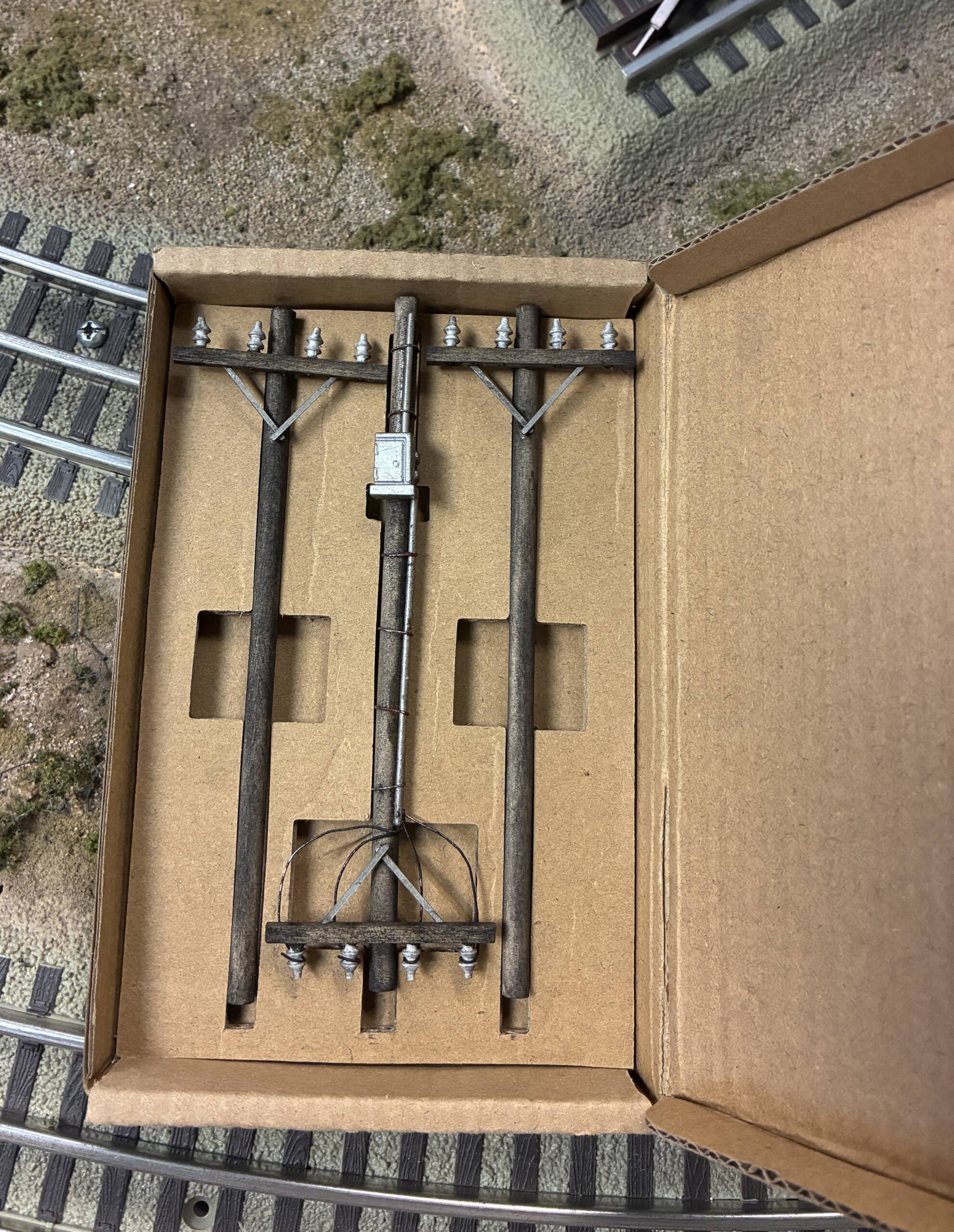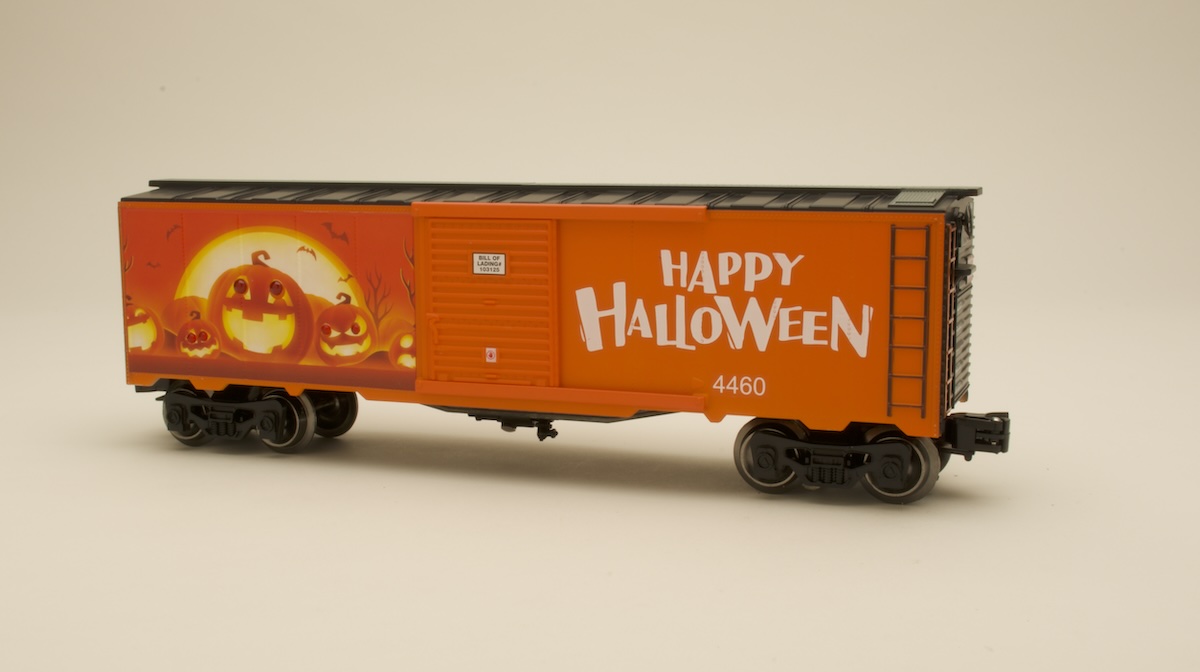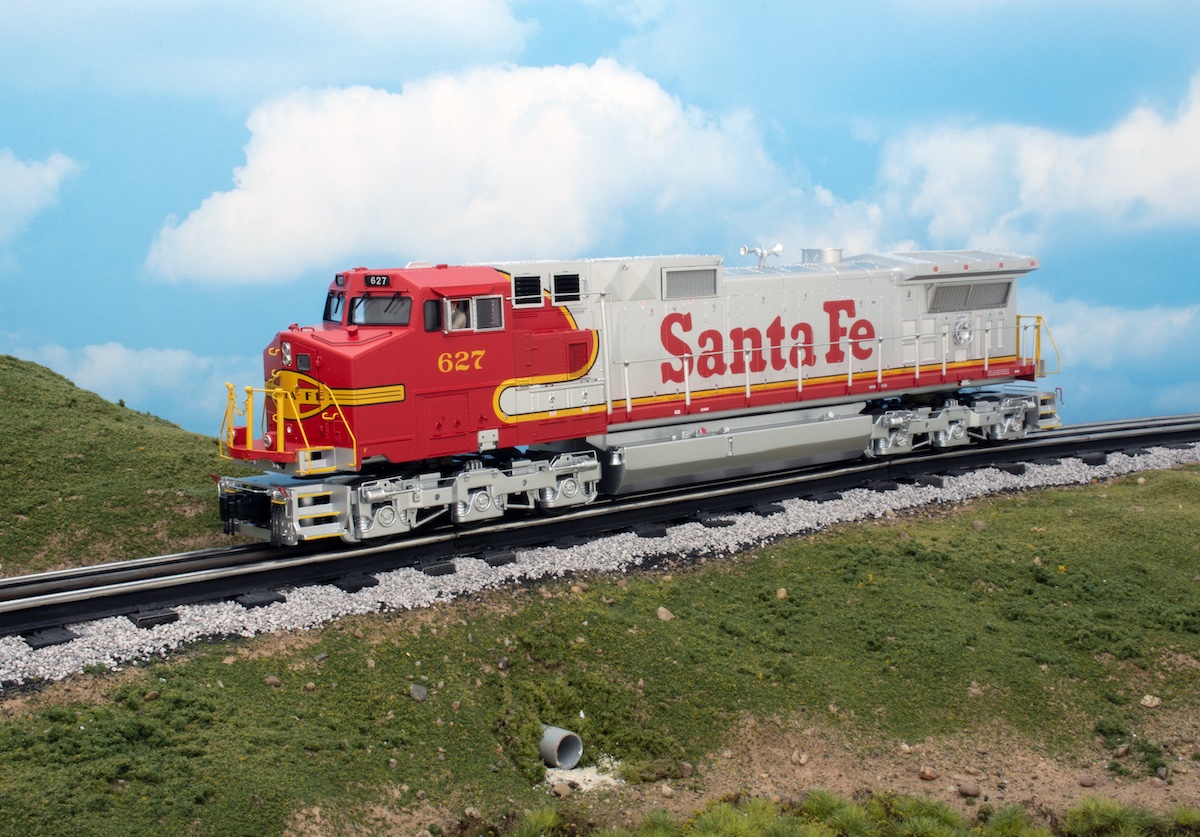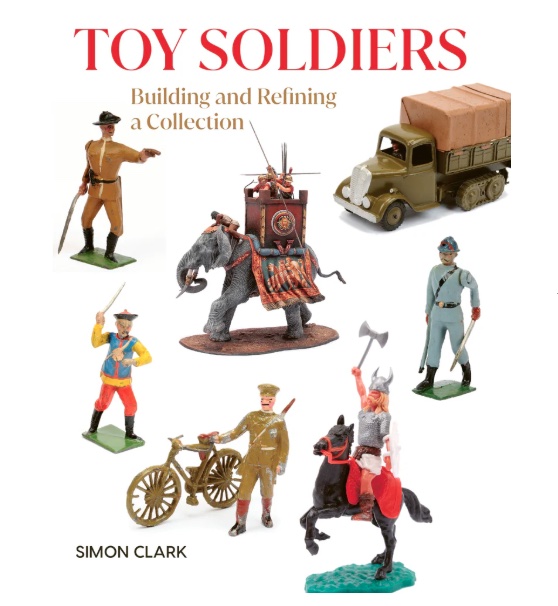While all new like the K-Line Hudson and featuring TrainMaster Command Control, Rail Sounds, Odyssey speed control, and a wireless tether, the Lionel model is the same size as a postwar small Hudson, along the lines of a no. 2046 or 2055.
But speaking in terms of traditional-sized steam power, I’d be hard pressed to think of another model of an over-the-road steam locomotive that offers the combination of detail and electronic features found on the LionMaster Hudson.
The model
Lionel did a fine job of capturing the familiar face of the Hudson, including the smokebox, compressor shields, add-on marker lights, and the headlight with the locomotive’s number and a blue New York Central System oval. You’ll also find attractive builder’s and trust plates on either side of the smokebox.
The pilot coupler is a cast-in dummy, and there is a cast-in dummy uncoupler bar.
Handrails bracket the smokebox with a nicely curved frame, and steps lead you up to the running boards along both sides of the boiler. The boiler itself is generally smooth, though there are cast-in boiler bands, pipes, and a few seams and hinges. Up top you’ll find a bell, whistle, and pop-off valves.
The running gear is an attractive, basic rig that catches the eye as the locomotive wheels around. The drivers measure 1.38 inches across, or about 66 inches in O scale. The prototype J3a-class drivers were 79 inches across.
The cab features a decorated backhead, a light, and firebox glow. The cab’s level of cast-in detail is first rate and puts a postwar 2046 to shame.
The locomotive’s lighting package includes headlight, illuminated marker lights, and a backup light.
Keeping in mind that this locomotive is part of the reduced-dimension LionMaster line, the model is 211/2 inches long or 86 feet in O scale. The prototype J3a with its 12,500-gallon, six-wheeled tender measured 95 feet, 10 inches in length.
The tender is attractive, with its large, simulated 24-ton coal load cast in. The outfit uses Lionel’s wireless tether.
The basic black-and-gray paint job was skillfully applied. Paint was even and smooth throughout, and detailed lettering, such as “Hydro test 1937,” was wonderfully executed.
On the test track
The J3a offers a satisfying operating experience, although in conventional-control mode its low speed is on the high side.
In our timed testing, the Hudson’s low-speed average out of the box, pulling nothing but its own tender, was 43.1 scale mph. To be fair, this plummeted to just 8.4 scale mph in command-control mode with the Odyssey speed control engaged. In conventional-control mode, the high-end speed average was 113.6 scale mph.
Lionel’s Odyssey speed control must be manually set to a specific speed in conventional-control mode, just like you press your car’s accelerator pedal to a certain position before pushing the cruise-control “set” button. With the LionMaster Hudson in conventional-control mode, you must get the locomotive’s speed to, say, 15 scale mph in conventional-control mode without Odyssey assistance before you can activate Odyssey and “set” the 15-mph speed. That’s a real “Catch-22” situation.
In command-control mode, however, Odyssey is active at whatever position your throttle indicates. There’s no need to first attain and then “set” a specific speed. Lionel has acknowledged that the low-speed performance in conventional-control is less than desirable and is making adjustments as new locomotives are released.
The Hudson is a good puller. Drawbar pull for the 7 1/2-pound locomotive is 2 pounds, 1.1 ounces. Running at 18 volts in conventional-control mode, the locomotive easily pulled our heavy, 25-car mixed make and vintage freight train at 80 scale mph.
All TrainMaster Command Control functions, such as opening the tender’s coil coupler, performed flawlessly.
To sum it up, the model is a traditional-size gem. It has good looks and performs well, excepting its speedy low-throttle performance in conventional-control mode. If I have any reservations, it’s that for a non-articulated locomotive with a $600 list price, I’d expect something more scale-like. Still, if you have O-31 track and hanker for scale-detailed steamers, this Hudson may be right up your alley.















I've been trying to find the lionmaster hudson for a couple of months now with no success. i'm looking for any of the three that were made; 38045, 38085, 38086. Those of you that have one are very lucky. i've searched the internet and train shops almost daily.